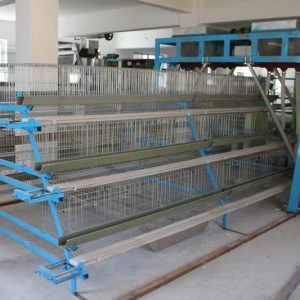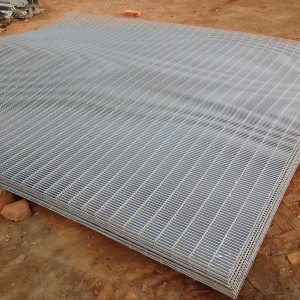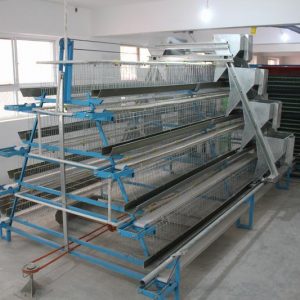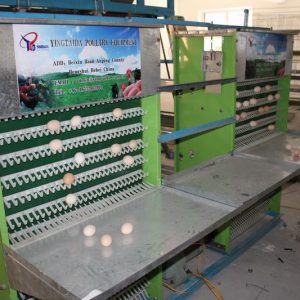
Ten essentials of spring brooding techniques
The brooding period is the basic stage in the production of chickens. The quality of the brooding work directly affects the normal development of the chickens throughout the growth period. Spring is the golden season for brooding, and technicians must manage it carefully.
The chicken house should be thoroughly cleaned and rinsed before entering the house, and then fumigated and disinfected with formalin (formaldehyde) and potassium permanganate. The doors and windows are closed for 12 to 24 hours, and then the doors and windows are opened for ventilation. All utensils are cleaned and disinfected with 0.2% potassium permanganate solution. After finishing these tasks, the chicks can be brought into the room.
Chickens must be given drinking water before they start to eat. In the first few days, potassium permanganate can be added to the drinking water to disinfect the drinking water and clean the stomach and intestines to promote the excretion of meconium. For chicks that have been transported over long distances, about 5% of glucose can be added to the drinking water to help eliminate fatigue and restore energy as soon as possible. At the same time, 0.01% of the chicks Kaolin or Sarafloxacin can be added to the drinking water to prevent Salmonella and E. coli And other intestinal diseases. The drinking water should be warmed in advance to make the water temperature basically the same as the brooding room temperature.
The chicks can be eaten 24 to 36 hours after they emerge. The feed should be fresh and the particle size should be moderate, so that it is easy for the chicks to peck, and the feed needs to be nutritious and easy to digest. Commonly used are broken corn, millet, broken rice, broken wheat, etc. The starter can be boiled until the eighth mature before feeding, which is conducive to the digestion of the chicks. Feed 5 to 7 times a day, and feed the starter for 2 to 3 days, gradually switch to the chicken mix for normal feeding, feed 4 to 5 times a day, and feed less frequently. You can mix some chopped green vegetables or tender grass leaves in the feed from the 4th day after the hull is released, and the feeding amount will account for about 10% of the total feed. Later, the feeding amount will be gradually increased to account for the total feed. 20%~30%.
The digestive function of chicks has not yet been fully developed, so it is necessary to feed a nutrient-rich, easy-to-digest full-price compound feed, and at the same time be fed an appropriate amount of green and juicy feed. The use of single feed or feed with incomplete nutrition is not conducive to the growth and development of chicks.
Although the temperature rises in spring, it is still cold overall. Maintaining a suitable temperature is the key to the success or failure of brooding. The body temperature regulation function of chicks is not sound and they are very sensitive to changes in environmental temperature. The level of environmental temperature has a direct impact on the survival rate and growth of chicks. The brooding house must be pre-warmed before entering the chicks to meet the temperature requirements for brooding. One is that the chicks in the first week of brooding in early spring need to have a house temperature of 35℃~36℃, and then decrease by 2℃~3℃ every week until the house temperature is 21℃~22%, and the temperature should be kept until The brooding is over. Second, according to the chicken’s reaction, when the temperature is too low, the chickens will scream and gather, and when the temperature is too high, they will scatter and pant. The chickens are evenly distributed and active when the temperature is right. It is also possible to use the combination of a thermometer and senses to judge whether the temperature is suitable.
Under normal circumstances, before 10 days of age, the relative humidity of the air is often too low due to the high brooding temperature. It is necessary to pay attention to supplement the moisture in the house so that the relative humidity in the brooding room reaches 60% to 65%. After 10 days of age, with the increase in age and weight, the feed intake, water intake, breathing volume, and fecal volume of the chicks will increase day by day. In addition, the brooding temperature will drop weekly, which can easily cause indoor humidity and The fungus of the feeder litter is poisoned, and the chickens are not adapted to this humid environment. Therefore, the brooding room should be ventilated and the litter should be changed frequently. When adding water, prevent water from being sprayed on the ground or litter, and try to put the brooding room as far as possible The relative humidity is controlled at 55%~60%.
The size of the stocking density should be adjusted appropriately according to the age of the chicks, breeds, feeding methods, seasons and chicken house structure. The reasonable density of flat-raised chicks: 0 to 4 weeks old 20-25 per square meter; 5-7 weeks old 10-20 per square meter. The reasonable density of online brooding is: 0 to 4 weeks old 24-28 per square meter; 5-7 weeks old 15-20 per square meter.
The reasonable light time is: 24 hours of light for 1 to 3 days of age, 16 to 19 hours of light for 4 to 14 days of age, and natural light after 15 days of age. For the light intensity, for every 15 square meter chicken house, use a 40-watt light bulb suspended at a height of 2 meters in the first week, and switch to a 25-watt light bulb from the second week.
During the brooding stage, due to the higher temperature of the chicken house and the higher density of the chicks, chicken manure and feed are easily rotten and fermented, producing a lot of ammonia, carbon dioxide and other harmful gases. Therefore, it is necessary to strengthen the ventilation of the brooding room to keep the air in the brooding room fresh. In order to solve the contradiction between ventilation and heat preservation, increase the brooding room temperature by 1℃~2℃ before ventilation, and after the ventilation is completed, it will basically drop to the original house temperature. The ventilation time is best to choose around noon on a sunny day, and ventilation should be done slowly , The opening degree of doors and windows should be from small to large, and finally half open.
According to local conditions, choose a reasonable immunization program to vaccinate, and the type of vaccine should be consistent with the age of the flock; all kinds of vaccination methods have strict regulations and should be done according to the instructions; the dilution of the vaccine generally uses special diluent or distilled water Add skimmed milk powder, and the diluted vaccine must be used up within the specified time; each chicken should be vaccinated; pay attention to the storage of the vaccine; do not spray and drink water for 24 hours before and after immunization with eye drops and nose drops, except for correct In addition to good use and selection of vaccines, spf vaccines produced by regular manufacturers must be used.



